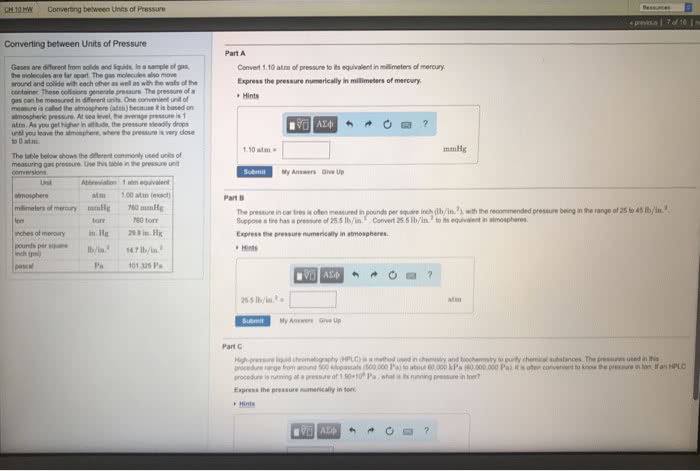CH 101 Chapter Notes - Chapter 5: Kinetic Theory Of Gases, Mean Free Path, Intermolecular Force
Document Summary
Pressure- the force exerted per unit area by gas molecules as they strike the surfaces around them. Gaseous atoms/molecules exert force when they collide with a surface. Pressure = force / area = f / a. Millimeter of mercury (mmhg)- common unit of pressure. Originates from how pressure is measured with a barometer. > evacuated glass tube, the tip of which is submerged in a pool of mercury. Atmosphere- another unit of pressure; average pressure at sea level. Pascal (pa)- si unit of pressure; 1 newton per 1 square meter. Manometer- can be used to measure the pressure of a gas sample in the laboratory. Four basic properties of a gas sample: pressure (p), volume (v), temperature (t), and amount in moles (n) Boyle"s law- inverse relationship between volume and pressure. Charles"s law- temperature and volume are positively correlated. **these temperatures must always be expressed in kelvin. Avogadro"s law- volume and number of moles are directly related.


